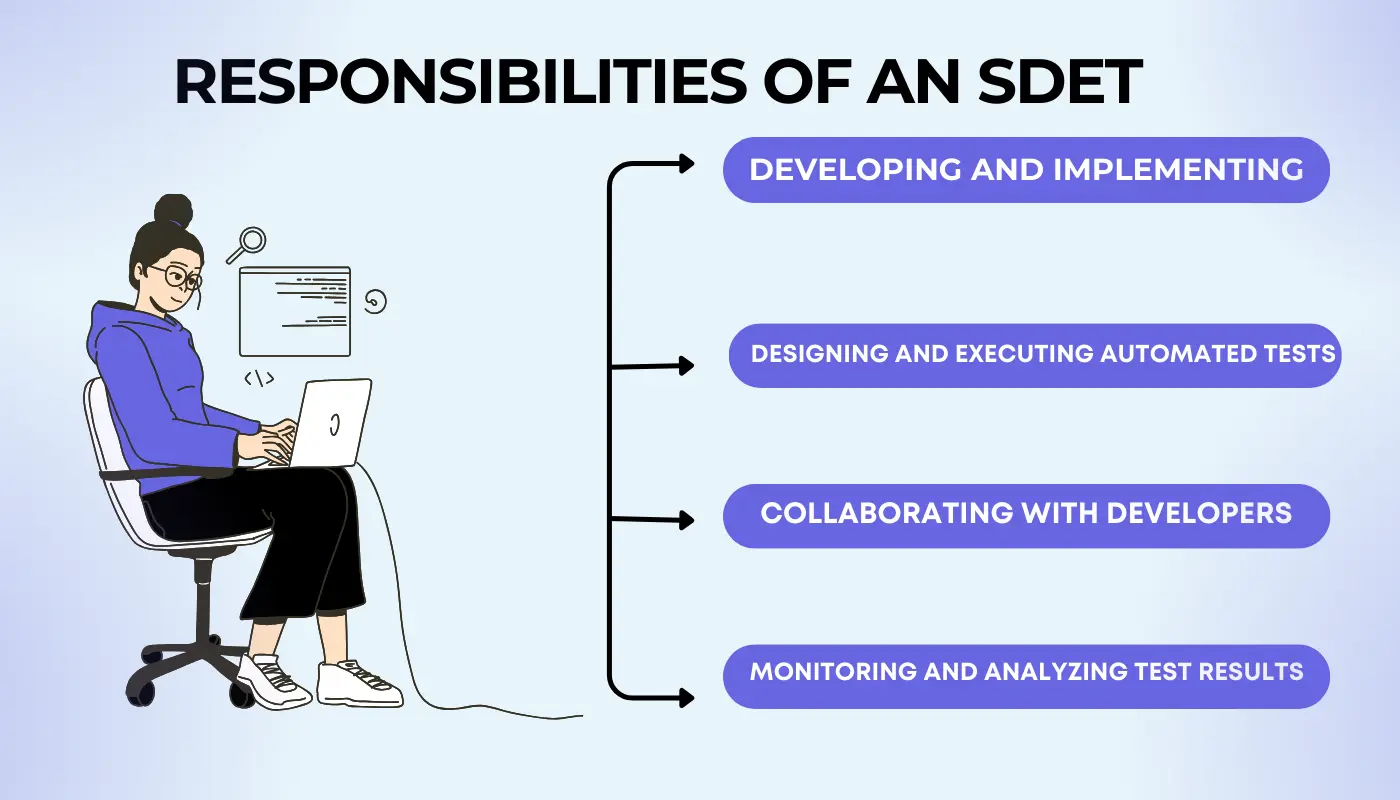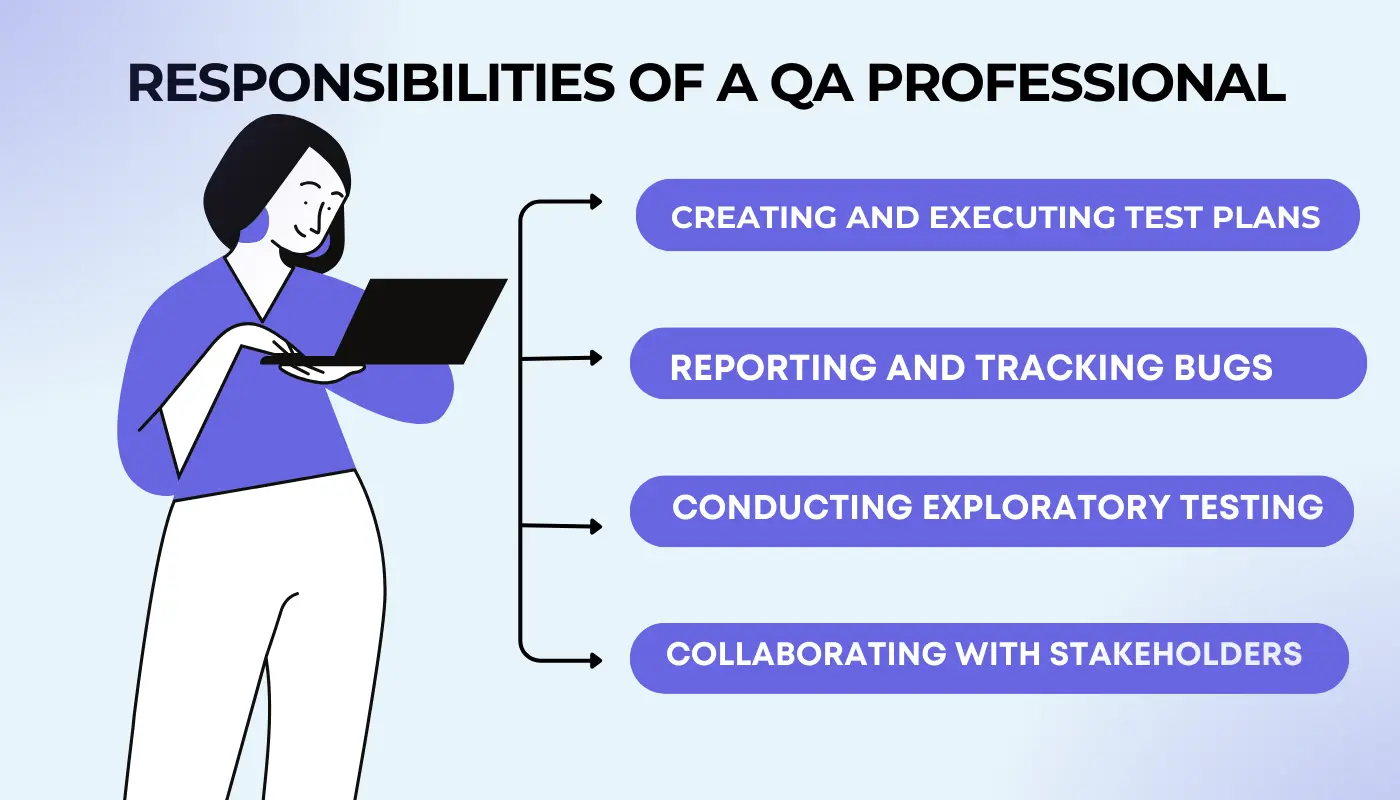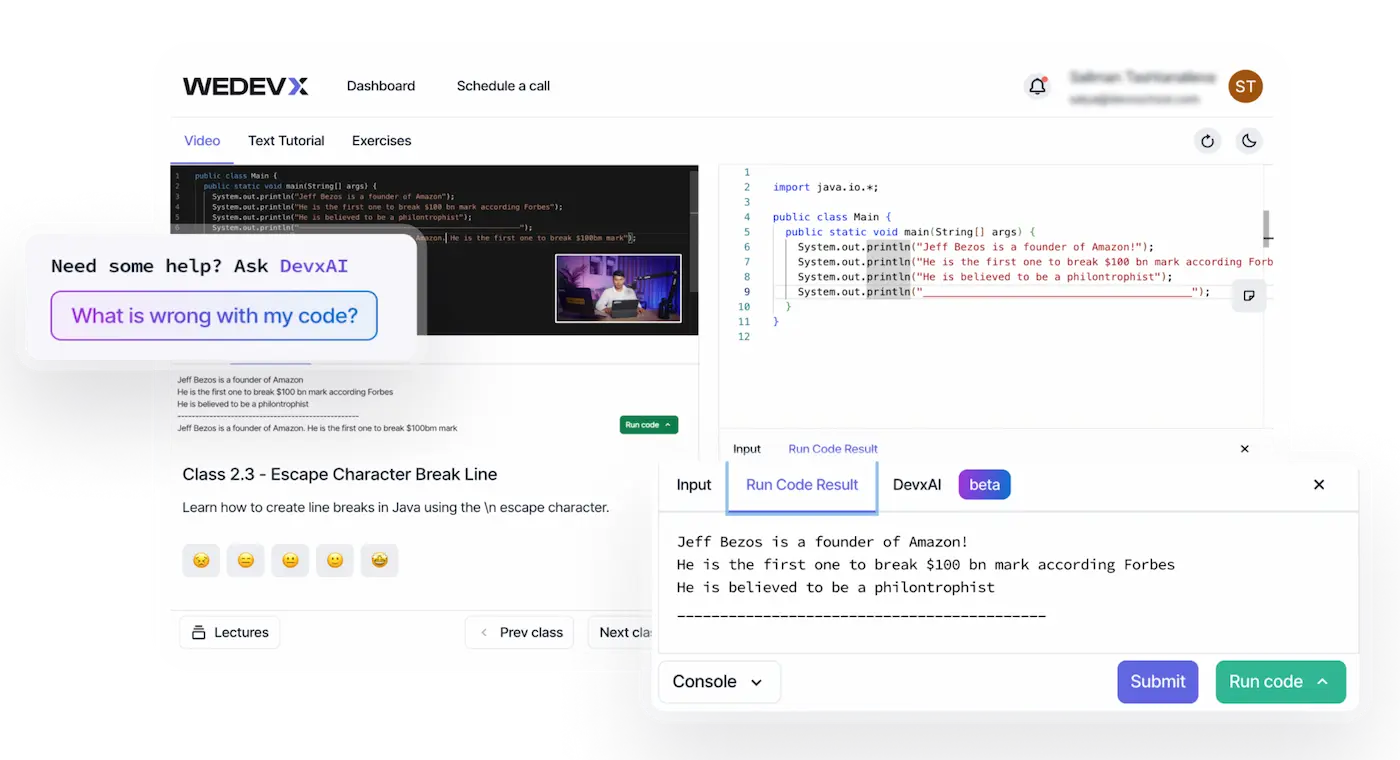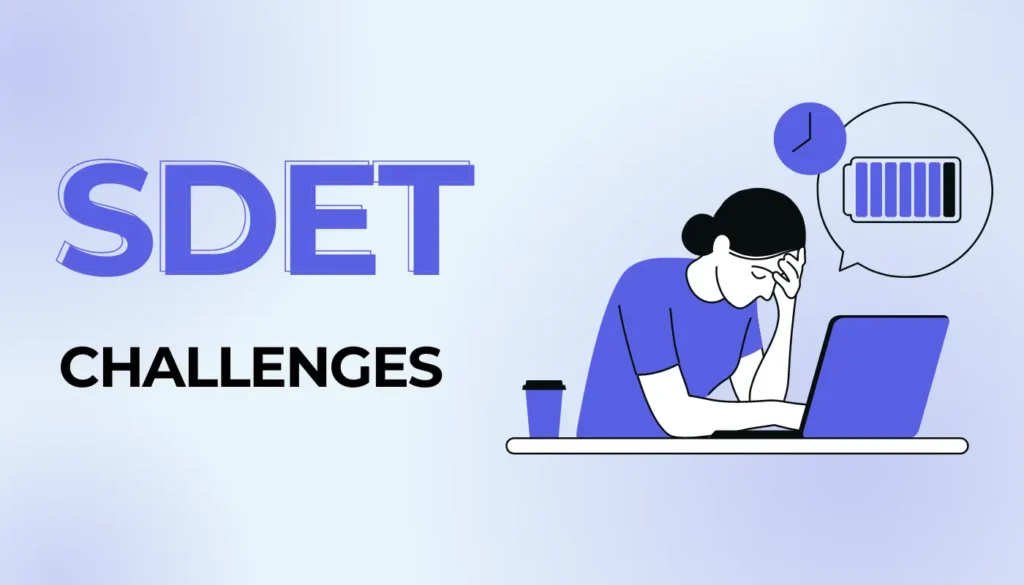The main difference between SDET and QA is that SDETs combine software development and testing, creating automated tests to find and fix bugs efficiently. On the other hand, QAs manually test software functionality, usability, and compliance with specifications to guarantee a high-quality user experience without directly writing code.
Introduction
As the world of software development continues to evolve at a rapid pace, so does the need for effective testing strategies. Software Development Engineers in Test (SDETs) and Quality Assurance (QA) professionals form an essential duo in ensuring the overall quality of software products. This article explores the roles and responsibilities of Automation Engineers and QA professionals and highlights their vital collaboration in establishing robust testing strategies, bug-free, hopefully!
The Roles of SDETs and QA Professionals
Software Development Engineers in Test (SDETs)
Imagine a world where automated tests are as robust as the human immune system, catching bugs before they cause chaos. Well, that’s precisely what Test Engineers strive to achieve! These tech-savvy superheroes combine the skills of software development and quality assurance to create automated test frameworks and tools that ensure the stability and reliability of software applications.
Automation Engineers have a deep understanding of both coding and testing principles, allowing them to create efficient, scalable, and maintainable test automation frameworks. With their expertise in programming languages and various testing tools, SDETs design and develop automated tests that cover a wide range of scenarios, improving test coverage and minimizing manual effort.

Quality Assurance (QA) Professionals
Across the software kingdom, QA professionals are the guardians of quality, tirelessly working to maintain the highest standards. These detail-oriented individuals ensure that software products meet all specified requirements and perform as expected. They conduct various types of testing, including functional, integration, performance, and usability testing.
A large chunk of a QA professional’s role involves manual testing, meticulously executing test plans, and reporting any issues or bugs they encounter. They act as the end-users advocate, putting themselves in their shoes to identify potential pain points and suggest improvements. Furthermore, QA professionals often collaborate closely with other stakeholders to ensure that quality remains a top priority throughout the entire software development lifecycle.

The Power of Collaboration
SDETs and QA professionals together form a dynamic duo, much like Batman and Superman, only without the capes (and the intense battles) but with their superpowers combined! Their collaboration is imperative to establish effective testing strategies.
When Software engineers in Test and QA professionals join forces, they bring the best of both worlds to the testing table. Engineer in Test empowers QA professionals by developing robust test automation frameworks that accelerate the testing process and increase efficiency. With automated tests taking care of repetitive tasks, QA professionals can focus on exploratory testing and uncovering edge cases that automated tests might miss.
On the other hand, QA professionals provide valuable feedback to Automation Engineers by identifying areas that require robust automation. By working collaboratively, they can fine-tune the test automation frameworks to cover critical test scenarios, strengthening the overall testing strategy. It’s like the perfect chemistry between two elements that creates an explosion of efficiency and accuracy. Just without the catastrophic aftermath!

Responsibilities of an SDET
Software Development Engineer in Tests has a broad range of responsibilities that go beyond traditional QA roles. They are proficient in programming languages, such as Java or Python, and are skilled in test automation frameworks like Selenium or Appium. Their primary responsibilities include:
1. Developing and implementing test automation frameworks: Software Engineers in Test contribute to the development of robust automation frameworks that improve the efficiency and effectiveness of testing processes. They employ various techniques to build scalable and maintainable code, ensuring reusability and adaptability across different projects.
2. Designing and executing automated tests: Engineers in Test create comprehensive test suites that encompass functional, performance, and regression testing. They write code to automate test cases and utilize tools to execute these tests in a controlled environment. By automating repetitive and time-consuming tasks, they enhance overall testing productivity.
3. Collaborating with developers: Automation Engineers work closely with developers to understand the software architecture, design, and functionalities. They provide feedback on code quality, suggest improvements, and ensure that best practices are followed in terms of testability and maintainability.
4. Monitoring and analyzing test results: Automation Testers analyze test results to identify patterns, trends, and potential areas for improvement. They perform root cause analysis for failed tests and work towards resolving issues in collaboration with the development team. This iterative process helps in enhancing the quality of the software.

Responsibilities of a QA professional
QA professionals have a specific set of responsibilities tailored toward ensuring the quality of software products. These responsibilities include:
1. Creating and executing test plans: QA professionals develop test plans based on software requirements and specifications. They design test cases, execute them manually, and document the results. Their objective is to validate the software against predetermined criteria and ensure that it meets client expectations.
2. Reporting and tracking bugs: QA professionals play a crucial role in identifying and documenting software defects or bugs. They accurately report these issues to the development team using bug-tracking systems such as Jira or Bugzilla. This helps in tracking the progress of bug fixes and ensures that all reported issues are resolved before the software release.
3. Conducting exploratory testing: QA professionals are skilled in exploratory testing techniques, where they use their domain knowledge and analytical skills to test software from different perspectives. This type of testing helps in uncovering subtle defects that may not be easily identified through scripted tests.
4. Collaborating with stakeholders: QA professionals work closely with business analysts, developers, and project managers to understand project requirements and ensure that testing aligns with the overall project goals. They actively participate in discussions, provide valuable insights, and contribute to the overall quality of the software.

AI POWERED
CODING PLATFORM
- DEVXAI ASSISTANT
- 300+ CODING EXERCISES
- REAL-LIFE CODING EXERCISES

Key Differences between SDET and QA
While Software Development Engineers in Test and QA professionals contribute to the software development process, several key differences set them apart. These include:
- Technical expertise: Software Engineers in Test possess strong programming skills and are proficient in automation tools and frameworks. QA professionals, on the other hand, focus more on manual testing and may have limited programming knowledge.
- Test automation: Automation Engineers are primarily responsible for developing and implementing automation frameworks, whereas QA professionals focus on manual testing.
- Collaboration with developers: Engineers in Test closely collaborate with developers, providing feedback and working together to ensure the testability and maintainability of code. QA professionals primarily interact with developers during bug reporting and resolution.
- Scope of responsibilities: Automation Testers have a wider scope of responsibilities that include not only testing but also the development and maintenance of automation frameworks. QA professionals are more focused on executing test cases and ensuring the overall quality of the software.

SDET and QA: Collaborative Approach
Despite their differences, Engineers in Test and QA professionals should collaborate effectively to enhance software quality. By leveraging each other’s strengths, they can create a synergy that drives excellence in the testing process. Automation Engineers can provide valuable insights into test automation, while QA professionals can contribute their expertise in manual testing, exploratory testing, and bug reporting.
Wedevx: A Hub of Excellence for SDET Courses
To become the ultimate testing dream team, both Software Development Engineers in Test and QA professionals need to continuously sharpen their skills. Enter Wedevx, the go-to website for all things related to SDET course. With a comprehensive range of courses designed to enhance knowledge and expertise, Wedevx is a haven for aspiring and seasoned Engineers in Test alike.
From mastering test automation with popular frameworks like Selenium and Appium to diving deep into performance testing and CI/CD integration, Wedevx offers an extensive library of resources to cater to various learning needs. Their courses are crafted by industry experts who bring real-world experiences into the digital classroom, ensuring that students are equipped with practical skills and knowledge that can be applied on the job.
Whether you’re a QA professional looking to explore the world of SDET or an Engineer in Test honing your skills to superhero status, Wedevx is your trusted partner in leveling up your testing game. So, don’t be the last one to slip into the phone booth and transform into a testing legend – join the Wedevx community today!

Conclusion
The collaboration between SDETs and QA professionals is a force to be reckoned with when it comes to establishing effective testing strategies. While Automation Engineers bring their coding prowess and test automation expertise to the table, QA professionals provide their meticulous manual testing skills and critical analysis. Even amid all the intricate code and meticulous testing, they create a testing ecosystem that covers a wide range of scenarios and ensures that software products meet the highest quality standards.
So, let’s raise a toast to the fantastic partnership of SDETs and QA professionals! May their collaboration continue to evolve and adapt to the ever-changing software landscape, emerging as the ultimate testing superheroes we need.











